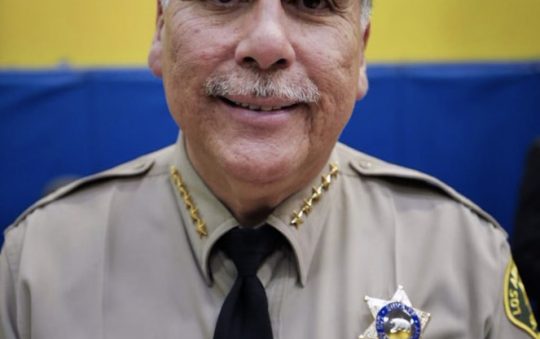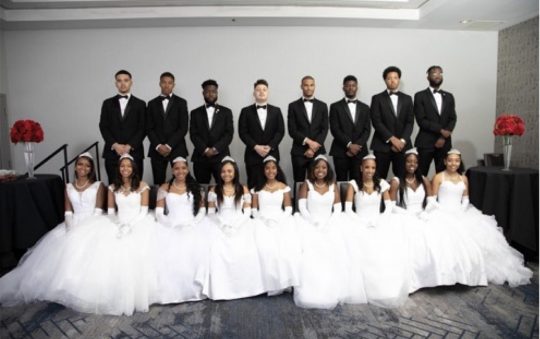
A year-long boycott begins a life of peaceful protest and service
By Charlene Crowell
NNPA Contributing Writer
Although America’s Declaration of Independence and Constitution are premised on the principles of democracy, the historical treatment of America’s citizens of color is replete with racial dichotomies. Even today, the vestiges of slavery, Civil War, Reconstruction, segregationist Jim Crow laws to the more recent federal laws for voting rights, fair housing, and community reinvestment–have yet to assure succeeding generations of African-Americans all of the freedoms afforded a citizen of the United States.
As our nation again marks an annual tribute to Dr. Martin Luther King, now is a timely moment to recall how a youthful but principled leader emerged at a time when this nation was directly challenged to honor its promises of citizenship. Neither age nor long-standing community roots were required to effect meaningful and lasting change. Today’s youth need to know and adults need to be reminded that it was at the young age of 25 that Dr. King began what would become his first successful and peaceful protest: the year-long Montgomery bus boycott.
In the fall of 1954, Dr. King began his service as pastor to Dexter Avenue Baptist Church. Shortly after his arrival in Montgomery, he met a ministerial colleague who would become his life-long deputy–Rev. Dr. Ralph Abernathy. Explaining the notable differences in Montgomery’s Black churches, Rev. Abernathy advised King, “At my church, you may talk about Jesus. You may preach about Jesus from the pulpit. But at Dexter, they would prefer that you not mention his name.”
Despite this advice, Dr. King pursued innovative ideas for his pastorate. At his first sermon at Dexter Avenue, he presented two dozen written recommendations that would reorganize the church’s committees and bank accounts. The list also included a requirement for every member of Dexter to be a registered voter. In 1954, less than five percent of Alabama Negroes were registered to vote.
With his recommendations accepted, the church moved forward with the formal installation services that took place on October 31, 1954.
A few months later on March 2, 1955, Claudette Colvin, a student at Montgomery’s Booker T. Washington High School was arrested by city police for refusing to give up a bus seat to a White passenger. Later that year another Black female, Mary Louise Smith, was also arrested for the same offense. In neither of these instances was the Montgomery NAACP prompted to action or protest. The local chapter seemed to feel that the backgrounds of the student and Ms. Smith would not withstand scrutiny of White prosecutors. In those days in Alabama, the first 10 seats on Montgomery buses were always reserved for Whites. If the White section filled up, the colored section was made smaller.
But, on Thursday evening, December 1, 1955, Rosa Parks, a local seamstress and secretary of the Montgomery NAACP decided to ride home on the Cleveland Avenue bus from her job at a downtown Montgomery department store. When the white section filled up, the bus driver asked four Blacks to move. Three other Black passengers complied with the order. Rosa Parks refused, and the driver called the police. Twelve years earlier, Mrs. Parks was evicted by the same driver on another bus. Recalling the events of that day, Mrs. Parks said, “I didn’t consider myself breaking any segregation laws. I just felt resigned to give what I could to protest against the way I was being treated.” The one phone call she was allowed from jail led to the response of another local NAACP official, E. D. Nixon. A Pullman porter by trade, Nixon aided the release of Mrs. Parks on a $100.00 bond. Her trial was set for December 5. The following day, Dr. Martin Luther King, Jr. received a phone call from Nixon. As he recounted the events of the previous evening, Nixon told Dr. King, “We have taken this thing too long already. We got to boycott the buses, make it clear to the white folks that we ain’t taking this type of treatment any longer.” Dr. King agreed and offered Dexter Avenue Baptist Church as a meeting place for community leaders. By consensus, they would decide the best course of action. Almost 50 ministers and civic leaders attended the meeting. They agreed that the bus boycott would begin on the following Monday, December 5th, the same day as Mrs. Parks’ trial. Some 52,000 flyers were printed and distributed to announce the boycott. The now-famous Montgomery boycott actually borrowed some of its strategy from an earlier, but little-known, effort. In 1953, Rev. T. J. Jemison, then secretary of the National Baptist Convention, organized a bus boycott in Baton Rouge, Louisiana. After local Louisiana officials banned the use of cut-rate and unlicensed taxi service, Jemison organized a car pool to provide alternative transportation. That effort lasted only two weeks. On December 5, 1955, Dr. King, the newly-appointed president of the Montgomery Improvement Association (MIA), delivered his first speech on the bus boycott. An overflow crowd of thousands at Holt Street Baptist spilled out of the church and into the streets. Outdoor loudspeakers were set up to enable all in attendance to hear the first address of, the young and emerging leader. With little time to prepare his remarks, Dr. King’s spell-binding oratory and Baptist cadence captured the spirit of an angry Montgomery Black community. “There comes a time my friends, when people get tired of being thrown across the abyss of humiliation, where they experience the bleakness of nagging despair. There comes a time when people get tired of being pushed out of the glittering sunlight of life’s July, and left standing amidst the piercing chill of an Alpine November.” “I want it to be known”, King continued, “that we’re going to work with grim and bold determination–to gain justice on the buses in this city. And, we are not wrong. We are not wrong in what we are doing. If we are wrong–the Supreme Court of this nation is wrong. If we are wrong–God Almighty is wrong! And, we are determined here in Montgomery to work and fight until justice rolls down like water and righteousness like a mighty stream!” A series of negotiating sessions began in early December as well. The protesters had three specific goals:
Treat Negroes with greater courtesy;
Hire Negro drivers for Negro routes; and
Desegregate bus seating.
In response, white negotiators insisted on racially segregated seating and active negotiations soon stalled.
With the Christmas shopping season fast approaching, Dr. King proposed that instead of traditional gift shopping, Montgomery Negroes should rally to the original meaning of the season and refuse to shop at all. Monies set aside for gifts was proposed to be divided three ways among savings account, charity donations, and gifts to the MIA. By January 1956, Montgomery’s bus company advised city commissioners that the loss of revenues had led to the likelihood of bankruptcy. In reaction, the mayor and White Citizens Council called for White residents to stop using their private cars and ride city buses instead. vWhen fare revenues did not improve, a fare hike was approved. That same month, the city’s daily paper, the Montgomery Advertiser began running news reports on the bus boycott. The first article, printed January 10 suggested that a White Lutheran minister was responsible for nearly 350 daily care rides and raising $7,000 to support the ongoing protest. However a follow-up report on January 19 appeared with the headline, “Rev. King is Boycott Boss”. On a tip from Carl Rowan, one of the few Black journalists of that time, Dr. King was alerted in late January to a Sunday news article that was to announce the end the boycott. The article was to claim that Negroes would return to the buses the following business day. Dr. King advised Rowan that he knew of nothing in that regard.
For more than a year, Montgomery’s 30,000 Black residents walked, hitchhiked, bicycled, taxied, and used every means of transportation except the city buses. Black taxi companies reduced regular rates to the same 10 cents charged by the bus company. As time went on, cab fares returned to the regular 45 cents. On February 1, 1956, the Montgomery Improvement Association filed a lawsuit in federal district court. Four months later, on June 2nd, the federal court declared that segregated bus seating was unconstitutional. Later, the U.S. Supreme Court upheld the ruling.
On December 20, 1956, the order to integrate buses was served on Montgomery’s officials.
In the year of the boycott, the transit company reportedly lost $250,000 in revenues. Moreover, the city lost thousands of additional dollars in taxes. Montgomery retail merchants estimated their losses to be in the millions. The boycott and its success won Dr. King as much widespread appreciation as it did resentment. In a December 1954 letter to his son, Dr. Martin Luther King, Sr. prophetically advised, “You see, young man, you are becoming very popular. As I told you, you must be very much in prayer. Persons like you are the ones the devil turns all of his forces loose to destroy.”






